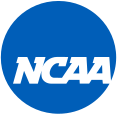Yes, College Athletes Should Be Paid

The NCAA—at all levels including Division-II Athletics—must stop exploiting college athletes.
When you are working a job, you expect to be compensated for what you do for your employer. You expect to be shown some type of gratitude other than “You did a good job” or “Thanks for working 50 hours this week.” How many of us would honestly work a job for free? I know I wouldn’t. I would never break my back for someone else just for the hell of it, and I don’t think many of you would either.
Some individuals have strong thoughts about the unpaid work college athletes across the nation put in. Former college athletes such as Chris Webber and Isiah Thomas have referred to the NCAA system as unpaid labor and indentured servitude. That may sound too harsh, but it does trigger a valid question: Why are tens of thousands of college athletes not paid by the NCAA for the money they earn the organization?
I believe that’s a fair question to ask, especially since a 2013 report found that the NCAA makes nearly $11 million in annual revenue. Half-a-decade later, that number is surely higher now. Division-I, II, and III athletics all earn an abundance of money for their institutions. So where does that money come from? It comes from the backs of 18-23 year-old students working hard to compete on the court, field, track, in the pool, and all other areas of play.
College football (CFB) is a juggernaut that dominates the college sports world. With its massive following, CFB generates a large portion of the NCAA’s profits. Why do you think major programs like Ole Miss and FSU have professional style game stadiums and tickets that can cost a couple hundred to a couple thousand?
With all of that money, not a single player is paid. Yet they’re the ones with pads and helmets playing on the field, not the executives wearing suits and ties. In what world does that seem mildly reasonable? Companies are allowed to make millions of dollars year after year from these players because they’re “student-athletes.” Even Division-II programs like Pace generate large amounts of cash.
The counterpoint that is always brought up when discussing whether or not college athletes should be paid is that they play on scholarships. However, only some players play on a scholarship, not all. Every university is given a certain amount of athletic scholarships by the NCAA to hand to potential students for all varsity sports. Any walk-on at Pace is paying full tuition just like any other student. And these athletes work hard, possibly even more than the average student.
When looking at college players around the country there are common trends that can be seen. Students dedicate 40 hours a week to practicing, that’s equivalent to a full-time job. On top of working so many hours, students are still required to maintain a certain GPA to remain on scholarship and complete regular college workloads. So, are these kids really getting a “free” education?
For those that are wondering how players can be paid, there are two solutions. The first is through profits of merchandising sales. If someone buys a jersey of their favorite player on that team, shouldn’t the one actually wearing the jersey be paid for it? The second way is through the college’s apparel deal. Brands like Nike and Adidas write a check to their respected schools for wearing their uniforms. A portion of that money can go directly into the hands of the students that wear the logo of that company come game day.
College athletes should be commended for the work they go through to play their sport and represent their institution. It’s only right considering that students have been exploited by the NCAA for decades. It’s time that they get what’s owed to them. A college education just simply is not enough as compensation anymore, and it never was.
Your donation supports independent, student-run journalism at Pace University. Support the Pace Chronicle to help cover publishing costs.

